Page 89 of 216

“Dynamic”: gear changes at higher
engine speeds. It enhances sporty driving;
“Natural”: gear changes at low engine
speeds. It enhances comfort and reduces
consumption;
“All Weather”: driving programme on
roads with poor grip (e.g. snow, ice, mud,
etc.).
Gearshifting suggestion
With the transmission in automatic mode
(selector lever in position D), when
gearshifting is required by the paddles on
the steering wheel (for versions/markets,
where provided), the system shifts to
"Sequential mode", with relevant
displaying of the gear engaged, for about
5 second.
When this time has elapsed, if the
paddles are not operated anymore, the
system goes back to the automatic mode
(D), with following displaying.
SEQUENTIAL DRIVING MODE
In sequential driving mode, the
transmission works like a manual
gearbox.
Gearshifting through gear lever
Move the lever sideways (to the left)
from position D to the sequential
position:
lever towards "+": engage higher gear;
lever towards "-": engage lower gear.
The lever correct position in "Sequential
mode" is signalled when the symbols "+"
and "−" switch on and the symbol D
switches off on the display (the gear
engaged only is shown on the display).
Gearshifting through steering wheel
paddles
(for versions/markets, where provided)
27)
On some versions, the steering wheel
paddles fig. 64 can be used to change
gear in sequential mode or in D:
steering wheel paddle "+" (pulling
paddle towards driver fig. 64 ): engage
higher gear;
steering wheel paddle "-" (pulling
paddle towards driver fig. 64 ): engage
lower gear.
The engagement of a lower or higher gear
is only permitted if the engine revs allow
it.
If the car is stopped with a higher gear
than 1
stengaged, the transmission will
automatically engage 1stgear.
"Launch Control" Function
96)
The "Launch Control" strategy permits
high-performance starting.
With the car stationary, proceed as
follows to activate this function:
operate the “Alfa DNA” system and
activate the "Dynamic" driving mode;
63A0K0612C64A0K0266C
87
Page 90 of 216
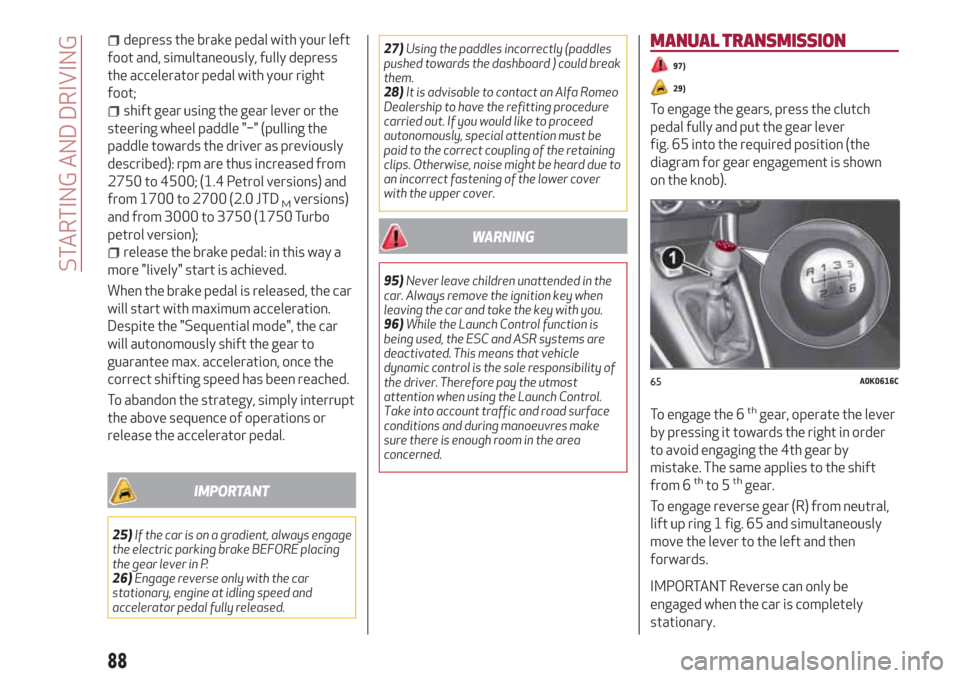
depress the brake pedal with your left
foot and, simultaneously, fully depress
the accelerator pedal with your right
foot;
shift gear using the gear lever or the
steering wheel paddle "−" (pulling the
paddle towards the driver as previously
described): rpm are thus increased from
2750 to 4500; (1.4 Petrol versions) and
from 1700 to 2700 (2.0 JTD
Mversions)
and from 3000 to 3750 (1750 Turbo
petrol version);
release the brake pedal: in this way a
more "lively" start is achieved.
When the brake pedal is released, the car
will start with maximum acceleration.
Despite the "Sequential mode", the car
will autonomously shift the gear to
guarantee max. acceleration, once the
correct shifting speed has been reached.
To abandon the strategy, simply interrupt
the above sequence of operations or
release the accelerator pedal.
IMPORTANT
25)If the car is on a gradient, always engage
the electric parking brake BEFORE placing
the gear lever in P.
26)Engage reverse only with the car
stationary, engine at idling speed and
accelerator pedal fully released.27)Using the paddles incorrectly (paddles
pushed towards the dashboard ) could break
them.
28)It is advisable to contact an Alfa Romeo
Dealership to have the refitting procedure
carried out. If you would like to proceed
autonomously, special attention must be
paid to the correct coupling of the retaining
clips. Otherwise, noise might be heard due to
an incorrect fastening of the lower cover
with the upper cover.
WARNING
95)Never leave children unattended in the
car. Always remove the ignition key when
leaving the car and take the key with you.
96)While the Launch Control function is
being used, the ESC and ASR systems are
deactivated. This means that vehicle
dynamic control is the sole responsibility of
the driver. Therefore pay the utmost
attention when using the Launch Control.
Take into account traffic and road surface
conditions and during manoeuvres make
sure there is enough room in the area
concerned.
MANUAL TRANSMISSION
97)
29)
To engage the gears, press the clutch
pedal fully and put the gear lever
fig. 65 into the required position (the
diagram for gear engagement is shown
on the knob).
To engage the 6
thgear, operate the lever
by pressing it towards the right in order
to avoid engaging the 4th gear by
mistake. The same applies to the shift
from 6
thto 5thgear.
To engage reverse gear (R) from neutral,
lift up ring 1 fig. 65 and simultaneously
move the lever to the left and then
forwards.
IMPORTANT Reverse can only be
engaged when the car is completely
stationary.
65A0K0616C
88
STARTING AND DRIVING
Page 91 of 216
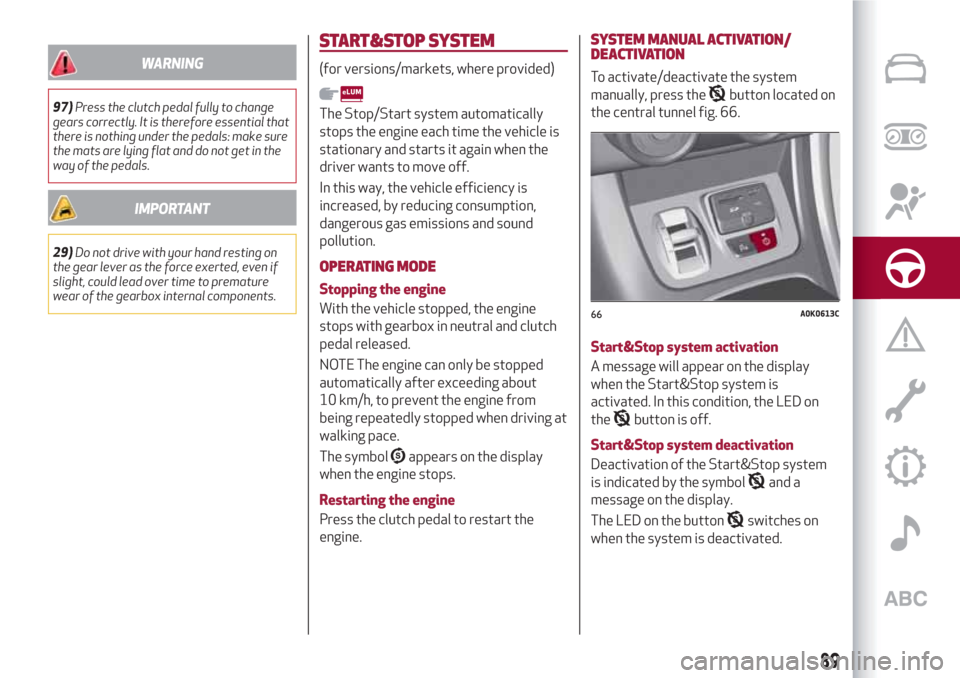
WARNING
97)Press the clutch pedal fully to change
gears correctly. It is therefore essential that
there is nothing under the pedals: make sure
the mats are lying flat and do not get in the
way of the pedals.
IMPORTANT
29)Do not drive with your hand resting on
the gear lever as the force exerted, even if
slight, could lead over time to premature
wear of the gearbox internal components.
START&STOP SYSTEM
(for versions/markets, where provided)
The Stop/Start system automatically
stops the engine each time the vehicle is
stationary and starts it again when the
driver wants to move off.
In this way, the vehicle efficiency is
increased, by reducing consumption,
dangerous gas emissions and sound
pollution.
OPERATING MODE
Stopping the engine
With the vehicle stopped, the engine
stops with gearbox in neutral and clutch
pedal released.
NOTE The engine can only be stopped
automatically after exceeding about
10 km/h, to prevent the engine from
being repeatedly stopped when driving at
walking pace.
The symbol
appears on the display
when the engine stops.
Restarting the engine
Press the clutch pedal to restart the
engine.
SYSTEM MANUAL ACTIVATION/
DEACTIVATION
To activate/deactivate the system
manually, press the
button located on
the central tunnel fig. 66.
Start&Stop system activation
A message will appear on the display
when the Start&Stop system is
activated. In this condition, the LED on
the
button is off.
Start&Stop system deactivation
Deactivation of the Start&Stop system
is indicated by the symbol
and a
message on the display.
The LED on the button
switches on
when the system is deactivated.
66A0K0613C
89
Page 92 of 216

MISSED ENGINE STOPPING
CONDITIONS
When the system is active, for a higher
comfort and safety, and to reduce
emissions, the engine does not stop in
certain ambient conditions, engine
conditions, with the doors not closed and
seat belts unfastened.
30)
ENGINE RESTARTING CONDITIONS
Due to comfort, emission control and
safety reasons, the engine can restart
automatically without any action by the
driver, when the vehicle and the climate
control system are in certain conditions,
such as:
With gear engaged, automatic engine
restarting is possible only by fully
pressing the clutch pedal. The driver is
informed by the displaying of a message
on the display and - for versions/markets,
where provided - by the flashing of the
symbol
.
SAFETY FUNCTIONS
When the engine is stopped by the
Start&Stop system, if the driver releases
his/her seat belt and opens the driver's or
passenger's door, the engine can be
restarted only by the ignition key.
The driver is informed by a buzzer and by
the flashing of the symbol
on the
display (on some versions, a message is
displayed as well).
"ENERGY SAVING" FUNCTION(for versions/markets, where provided)
If, following the automatic engine
restarting, the driver does not carry out
any action on the vehicle for over
3 minutes, the Start&Stop system stops
the engine definitely, to prevent fuel
consumption. In these cases, the engine
can be restarted only using the ignition
key.
NOTE In any case, it is possible to keep
the engine running by deactivating the
Start&Stop system.
IRREGULAR OPERATION
In the event of malfunction, the
Stop/Start system is deactivated.
The driver is informed of the fault by the
flashing of the symbol
.For
versions/markets, where provided, a
warning message will also appear on the
display.
In this case, contact an Alfa Romeo
Dealership.
VEHICLE INACTIVITY
In the event of vehicle inactivity (or if the
battery is replaced), special attention
must be paid to the disconnection of the
battery power supply.
98)
IMPORTANT
30)If climate comfort is to be favoured, the
Stop/Start system can be deactivated, for a
continuous operation of the climate control
system.
WARNING
98)When replacing the battery, always
contact an Alfa Romeo Dealership. Replace
the battery with one of the same type
(HEAVY DUTY) and with the same
specifications.
90
STARTING AND DRIVING
Page 93 of 216

CRUISE CONTROL
(for versions/markets, where provided)
This is an electronically controlled driving
assistance device that allows the desired
vehicle speed to be maintained, without
having to press the accelerator pedal.
This device can be used at a speed above
30 km/h on long stretches of dry, straight
roads with few variations (e.g.
motorways). It is therefore not
recommended to use this device on
extra-urban roads with traffic. Do not use
it in town.
ACTIVATING THE DEVICE
Turn ring 1 fig. 67to ON.
The device cannot be engaged in 1
stor
reverse gear: it is advisable to engage it
in 5
thgear or higher.When travelling downhill with the device
engaged, the car may slightly exceed the
stored speed.
Activation is indicated by the warning
light
.
SETTING THE DESIRED SPEED
Proceed as follows:
turn ring 1 fig. 67 to ON and press the
accelerator to reach the required speed;
move the stalk upwards (+) for at least
1 second, then release it: the car speed is
now stored and you can therefore release
the accelerator.
If needed (when overtaking for instance),
you can accelerate simply by pressing the
accelerator; when you release the pedal,
the vehicle goes back to the speed stored
previously.
RESTORING THE MEMORISED SPEED
If the device has been disengaged by
pressing the brake or clutch pedal, the
stored speed can be reset as follows:
accelerate gradually until a speed
approaching the one stored is reached;
engage the gear selected at the time
of speed storing;
press the RES button (2 fig. 67).
INCREASING THE MEMORISED SPEED
Once the electronic Cruise Control has
been activated, the speed can be
increased by pressing button SET +.
REDUCING THE MEMORISED SPEED
Once the electronic Cruise Control has
been activated, the speed can be reduced
by pressing the button SET -.
DEACTIVATING THE DEVICE
The device can be switched off in the
following ways:
by turning the ring 1 fig. 67 to the OFF
position;
by switching off the engine;
by pressing the brake pedal, the clutch
or the accelerator; in this last case the
system is not effectively deactivated but
the system gives priority to the
acceleration request. The device still
remains active, without the need to press
the RES button to return to the previous
conditions once acceleration is
concluded.
Automatic deactivation
The device is automatically switched off
in the following cases:
if the ABS or ESC systems intervene;
with the vehicle speed below the set
limit;
in the event of system failure.
99)67A0K0559C
91
Page 94 of 216

WARNING
99)When travelling with the device active,
never move the gear lever to neutral.
100)In case of a malfunction or failure of
the device, contact an Alfa Romeo
Dealership.
PARKING SENSORS
(for versions/markets, where provided)
These are located in the car's front
bumper and rear bumper and their
function is to inform the driver, through
an intermittent acoustic signal, about the
presence of obstacles in front of and
behind the car.
ACTIVATION
Version with rear sensors
On the versions with rear sensors, the
system is activated when the reverse
gear is engaged.
Version with front and rear sensors
On versions with front sensors and rear
sensors, the system is activated when
the reverse gear is engaged or by
pressing the button on the centre console
.
When reverse gear is released, the front
and rear sensors remain activated until a
speed of around 15 km/h is exceeded to
allow the parking manoeuvre to be
completed.
The sensors are deactivated by pressing
the button
again or when a speed of
15 km/h is exceeded: the LED in the
button is off when the system is not
active.
INDICATIONS ON DISPLAY(for versions/markets, where provided)
Versions with rear sensors
On activating the sensors, the image of
the vehicle with rear distance bars will
appear on the "Reconfigurable
Multifunction Display".
Versions with front and rear sensors
On activating the sensors, the image of
the vehicle with front and rear distance
bars will appear on the "Reconfigurable
Multifunction Display".
Obstacle presence and distance
information is therefore provided both
by the buzzer (volume of the acoustic
warning cannot be adjusted) and the
indication on the display.
If there are several obstacles, the closest
one is displayed. On the version with
front and rear sensors, the closest
obstacle in the front area and in the rear
area is displayed.
ACOUSTIC SIGNAL
The information concerning the presence
and distance of an obstacle from the car
is transmitted to the driver by means of
acoustic signals from buzzers installed in
the passenger compartment.
92
STARTING AND DRIVING
Page 95 of 216

When reverse gear is engaged an
acoustic signal is automatically activated
if there is an obstacle within the range of
operation.
The acoustic signal:
increasesas distance between the car
and the obstacle decreases;
becomes continuouswhen the
distance between the car and the
obstacle is less that 30 cm and stops
immediately if the distance increases;
is constantif the distance is unvaried;
if this situation occurs for the side
sensors, the signal will stop after about
3 seconds to avoid, for example,
indications in the event of manoeuvres
alongside walls.
OPERATION WITH A TRAILER
Parking sensor operation is automatically
turned off when the trailer electric cable
plug is fitted into the car tow hook
socket.
31)
The sensors are automatically
reactivated when the trailer's cable plug
is removed.
101) 102)
IMPORTANT NOTES
During parking manoeuvres, pay the
utmost attention to any obstacles that
could be located above or below the
sensors.
Objects set close to the car rear, under
certain circumstances are not detectedand could therefore cause damage to the
car or be damaged.
The following conditions may influence
the performance of the parking
assistance system:
reduced sensor sensitivity and a
reduction in the parking assistance
system performance could be due to the
presence on the surface of the sensor of:
ice, snow, mud, thick paint
The sensors may detect a
non-existent obstacle (echo interference)
due to mechanical interference, for
example when washing the car, in rain
(strong wind), hail.
The signals sent by the sensors can
also be altered by the presence of
ultrasonic systems (e.g. pneumatic brake
systems or pneumatic drills) near the
vehicle.
sensor performance can also be
influenced by the position of the sensors.
For example by a change in the ride
setting (caused by the wear of the shock
absorbers, suspension), overloading the
car and carrying out specific tuning
operations that require the car to be
lowered;
The detection of obstacles at the top
part of the car may not be guaranteed
because the system detects obstacles
that could cause an impact with the car in
the bottom part.
IMPORTANT
31)The sensor must be free of mud, dirt,
snow or ice in order for the system to work.
Be careful not to scratch or damage the
sensors while cleaning them. Avoid using dry,
rough or hard cloths. The sensors must be
washed using clean water, with the addition
of vehicle shampoo if necessary. When using
special washing equipment such as high
pressure jets or steam cleaning, clean the
sensors very quickly keeping the jet more
than 10 cm away.
WARNING
101)Only have the bumpers repainted or
any retouches to the paintwork in the area of
the sensors carried out by an Alfa Romeo
Dealership. Incorrect paint application could
affect the operation of the parking sensors.
102)Parking and other dangerous
manoeuvres are, however, always the
driver’s responsibility. While carrying out
these manoeuvres, always make sure that
no people (especially children) or animals are
in the area concerned. The parking sensors
are an aid for the driver, but the driver must
never allow their attention to lapse during
potentially dangerous manoeuvres, even
those executed at low speeds.
93
Page 96 of 216

TOWING TRAILERS
IMPORTANT NOTES
The car must be provided with a
type-approved tow hook and adequate
electric system to tow caravans or
trailers. Installation must be carried out
by a specialist.
Install any specific and/or additional door
mirrors as specified by the Highway
Code.
Remember that when towing a trailer,
steep hills are harder to climb, the
braking spaces increase and overtaking
takes longer depending on the overall
weight.
Engage a low gear when driving downhill,
rather than constantly using the brake.
The weight of the trailer reduces the load
capacity of the car by the same amount.
Consider the weight at full load, including
accessories and luggage, to make sure
you do not exceed the maximum towable
weight (shown in the registration
document).
Do not exceed the speed limits specific
to each country you are driving in, in the
case of vehicles towing trailers. In any
case do not exceed 100 km/h.
INSTALLING A TOW HOOK
Contact an Alfa Romeo Dealership to
install a tow hook.
103) 104)
WARNING
103)The ABS with which the car is equipped
will not control the braking system of the
trailer. Particular caution is therefore
required on slippery roads.
104)Do not, under any circumstances,
modify the vehicle's braking system to
control the trailer breaking system. The
towing braking system must be completely
independent of the vehicle's hydraulic
system.
REFUELLING THE CAR
Stop the engine before refuelling.
PETROL ENGINES
Only use unleaded petrol 95 R.O.N.
compliant with the European
specification EN228. The petrol octane
rating (RON) must not be lower than 95.
In order to prevent damage to the
catalytic converter never introduce even
the smallest amount of leaded petrol,
even in the event of an emergency.
DIESEL ENGINES
Only use diesel fuel compliant with
European specification EN590. The use
of other products or mixtures may
damage the engine beyond repair and
consequently invalidate the warranty,
due to the damage caused.
Operation at low temperatures
If the outside temperature is very low,
diesel thickens due to the formation of
paraffin clots with consequent defective
operation of the fuel supply system.
In order to avoid these problems,
different types of Diesel are distributed
according to the season: summer type,
winter type and arctic type (cold,
mountain areas).
94
STARTING AND DRIVING
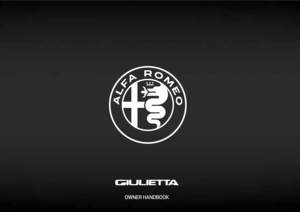 1
1 2
2 3
3 4
4 5
5 6
6 7
7 8
8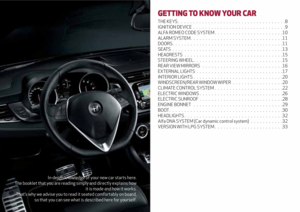 9
9 10
10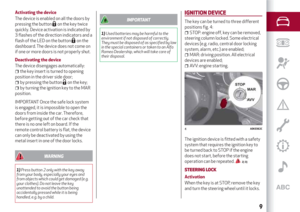 11
11 12
12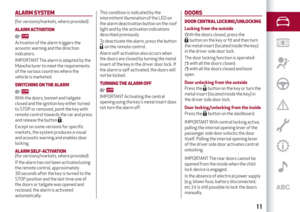 13
13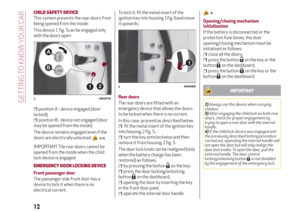 14
14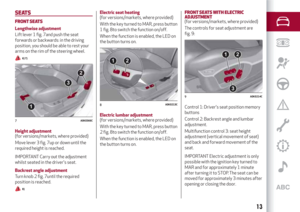 15
15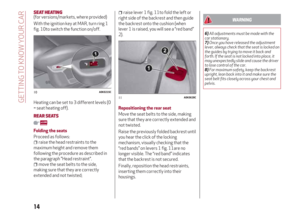 16
16 17
17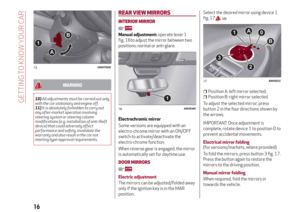 18
18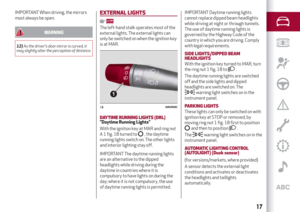 19
19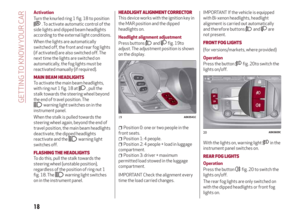 20
20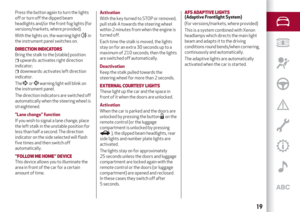 21
21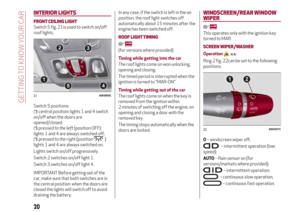 22
22 23
23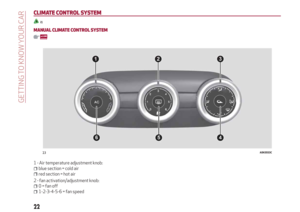 24
24 25
25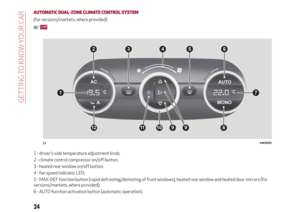 26
26 27
27 28
28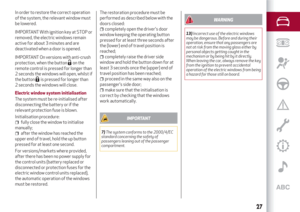 29
29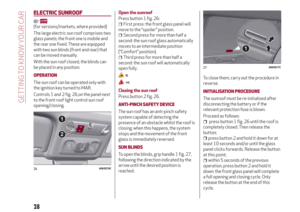 30
30 31
31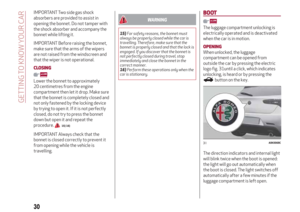 32
32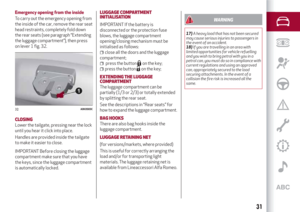 33
33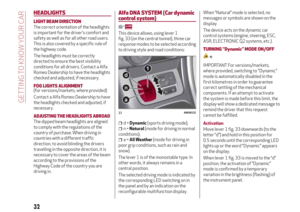 34
34 35
35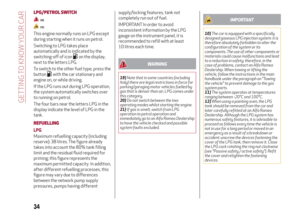 36
36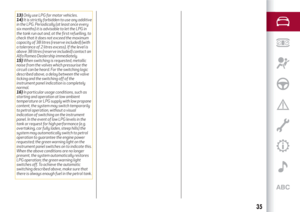 37
37 38
38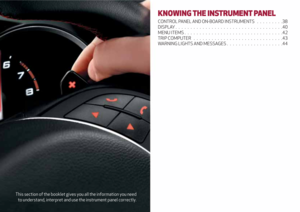 39
39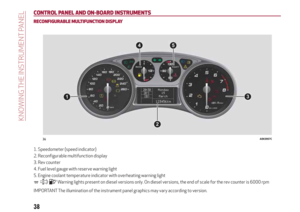 40
40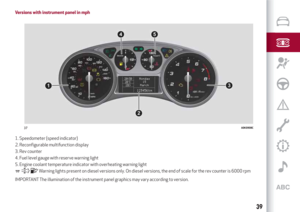 41
41 42
42 43
43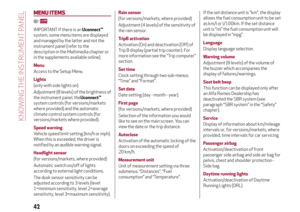 44
44 45
45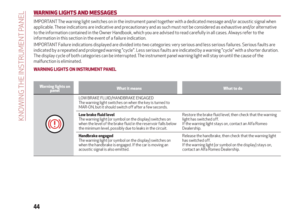 46
46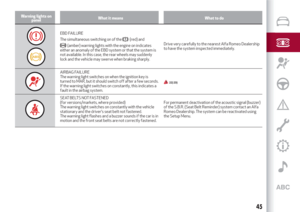 47
47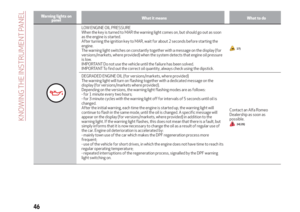 48
48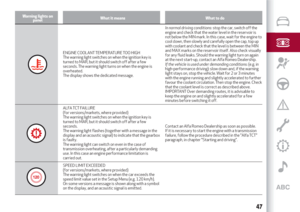 49
49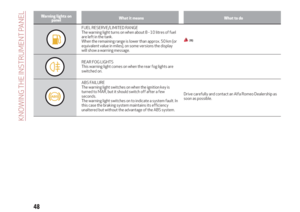 50
50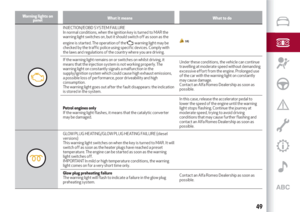 51
51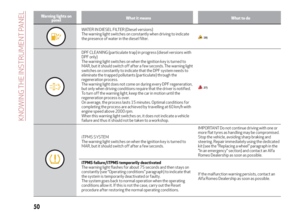 52
52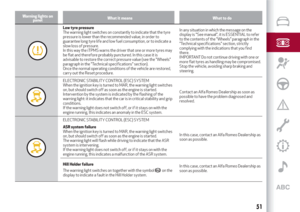 53
53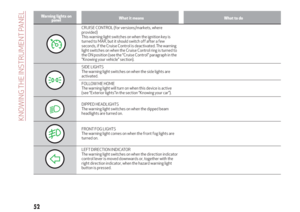 54
54 55
55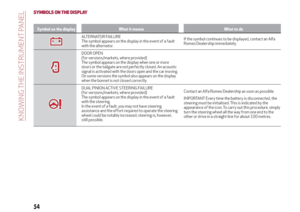 56
56 57
57 58
58 59
59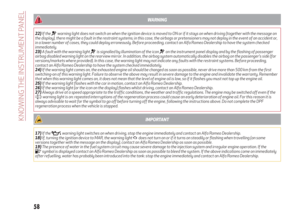 60
60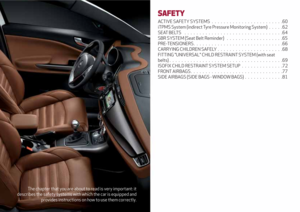 61
61 62
62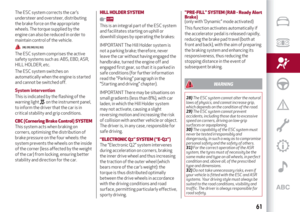 63
63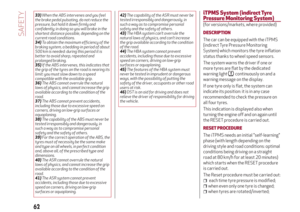 64
64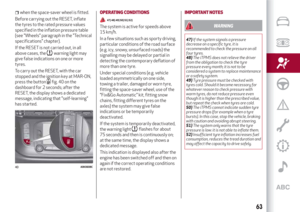 65
65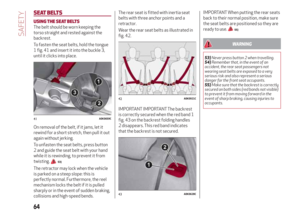 66
66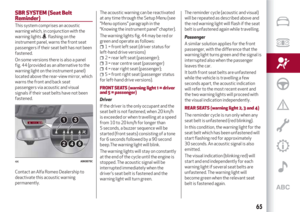 67
67 68
68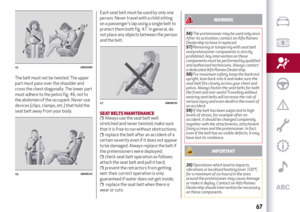 69
69 70
70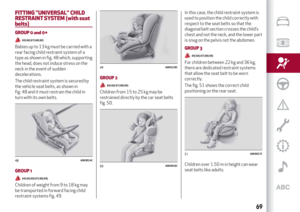 71
71 72
72 73
73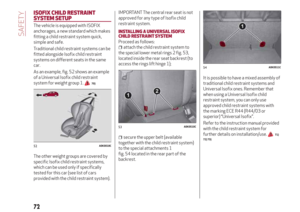 74
74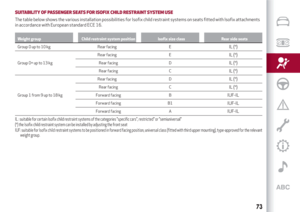 75
75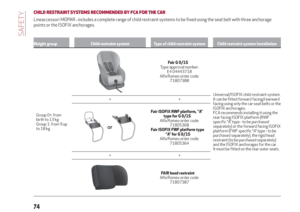 76
76 77
77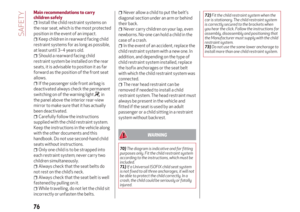 78
78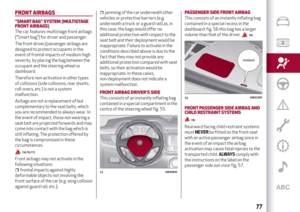 79
79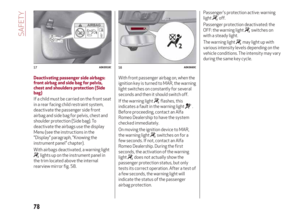 80
80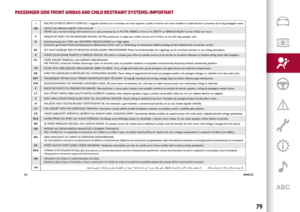 81
81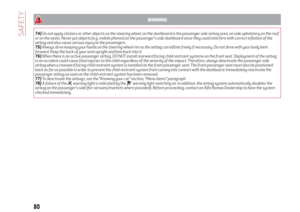 82
82 83
83 84
84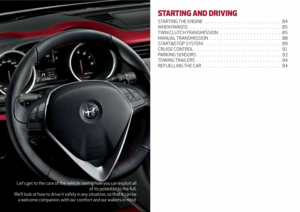 85
85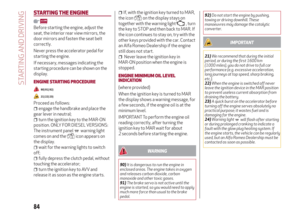 86
86 87
87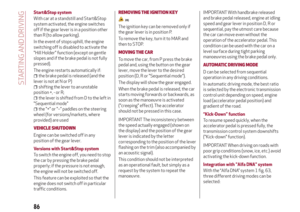 88
88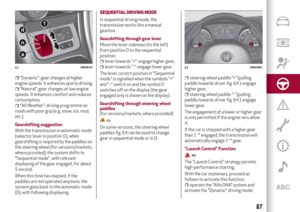 89
89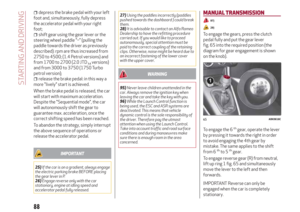 90
90 91
91 92
92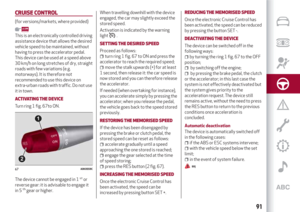 93
93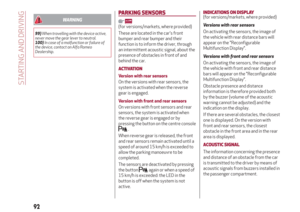 94
94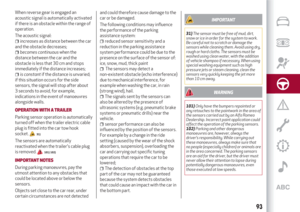 95
95 96
96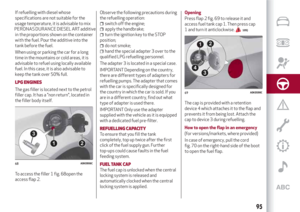 97
97 98
98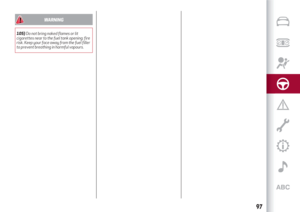 99
99 100
100 101
101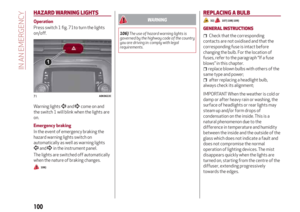 102
102 103
103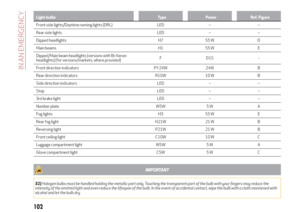 104
104 105
105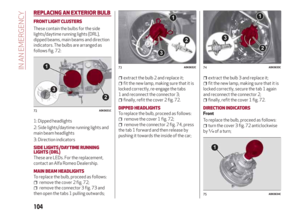 106
106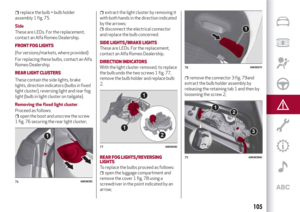 107
107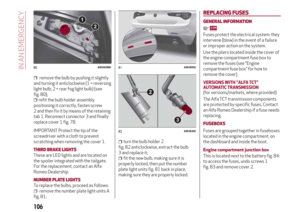 108
108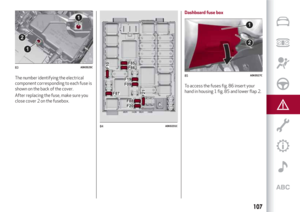 109
109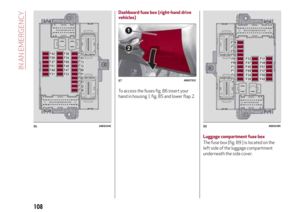 110
110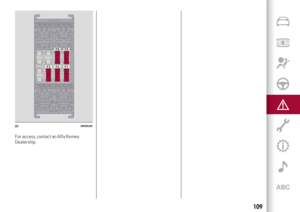 111
111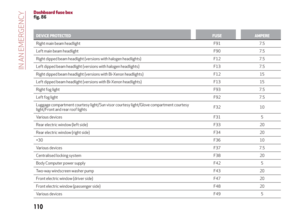 112
112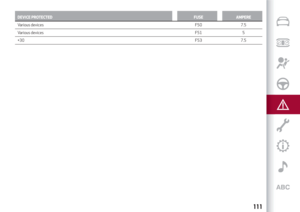 113
113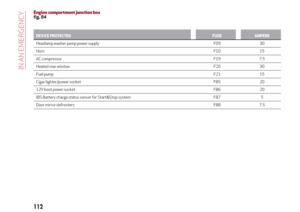 114
114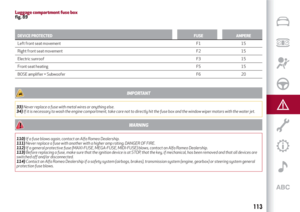 115
115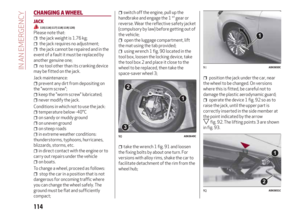 116
116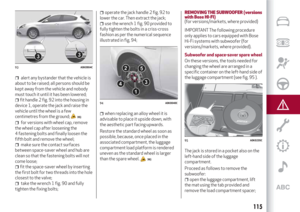 117
117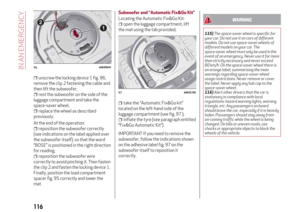 118
118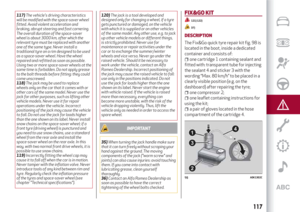 119
119 120
120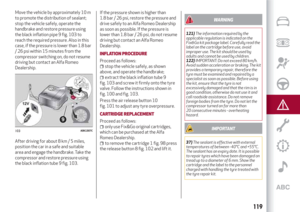 121
121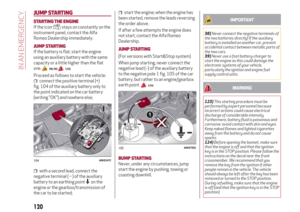 122
122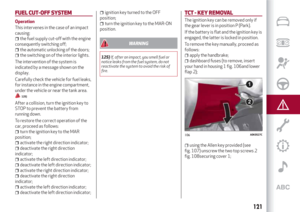 123
123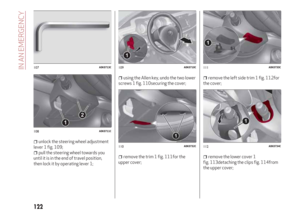 124
124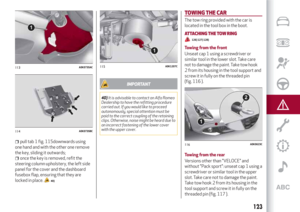 125
125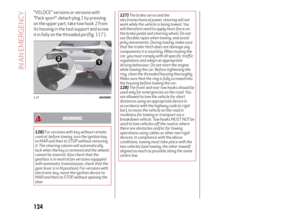 126
126 127
127 128
128 129
129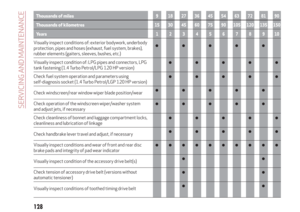 130
130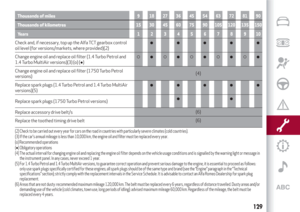 131
131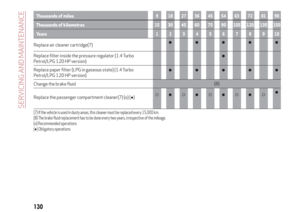 132
132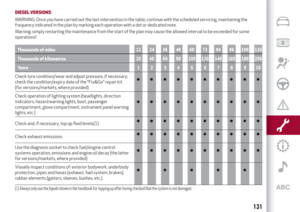 133
133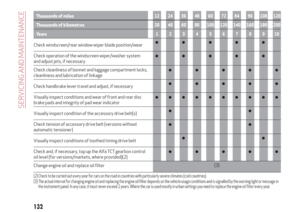 134
134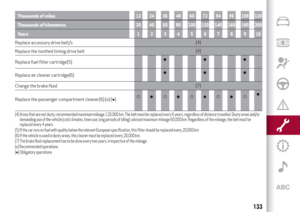 135
135 136
136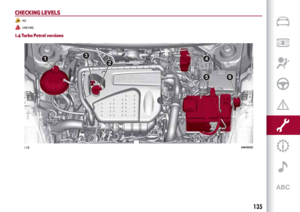 137
137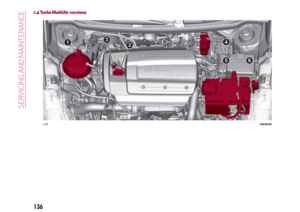 138
138 139
139 140
140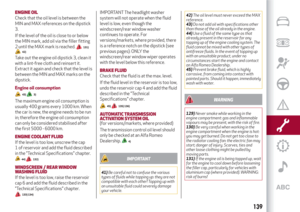 141
141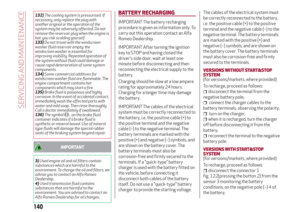 142
142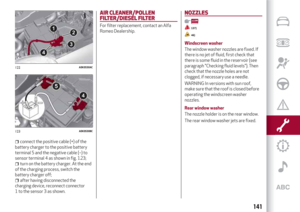 143
143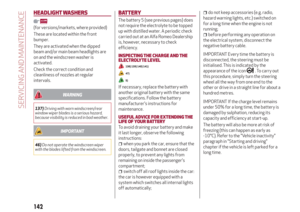 144
144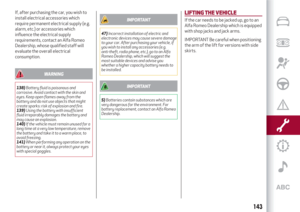 145
145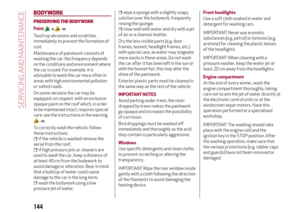 146
146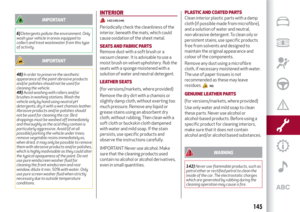 147
147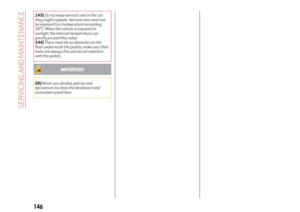 148
148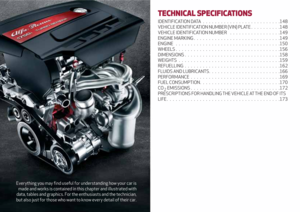 149
149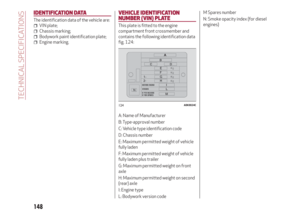 150
150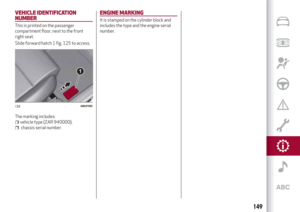 151
151 152
152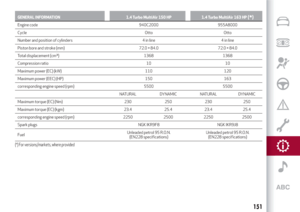 153
153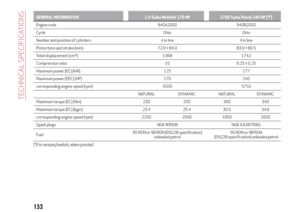 154
154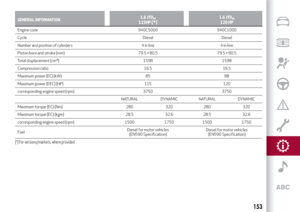 155
155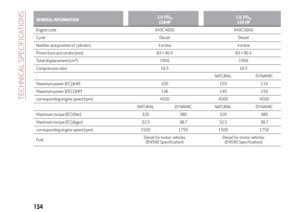 156
156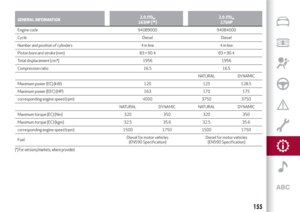 157
157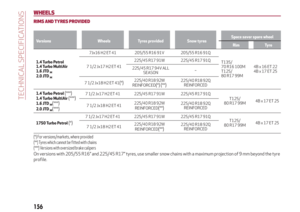 158
158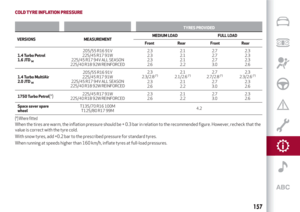 159
159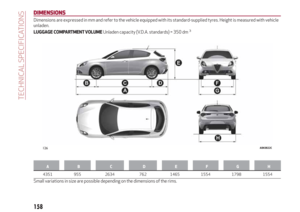 160
160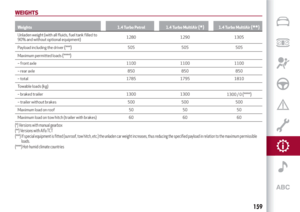 161
161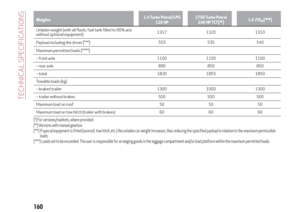 162
162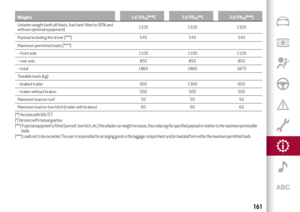 163
163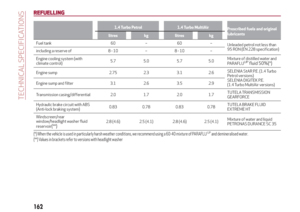 164
164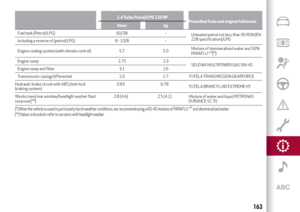 165
165 166
166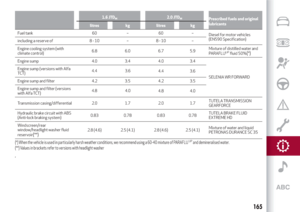 167
167 168
168 169
169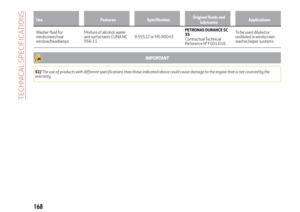 170
170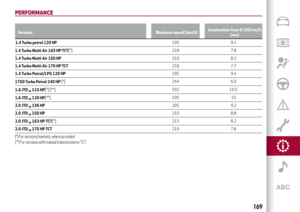 171
171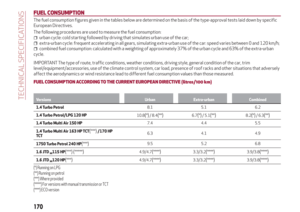 172
172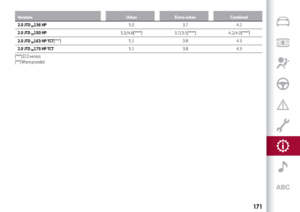 173
173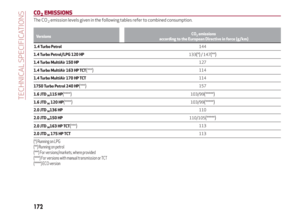 174
174 175
175 176
176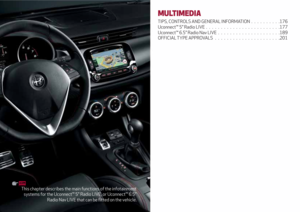 177
177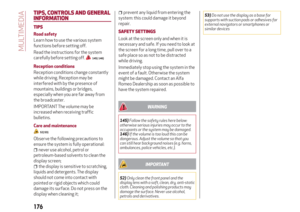 178
178 179
179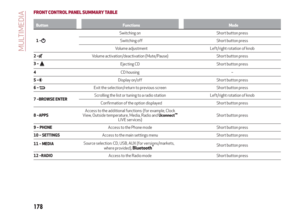 180
180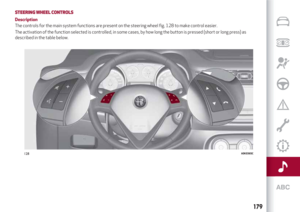 181
181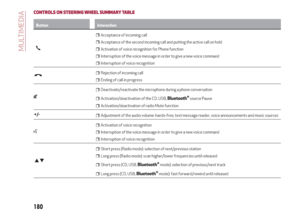 182
182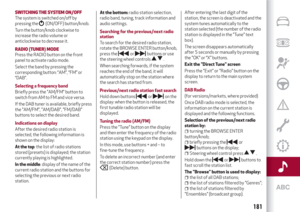 183
183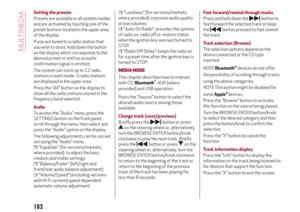 184
184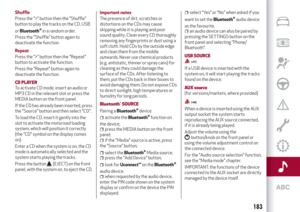 185
185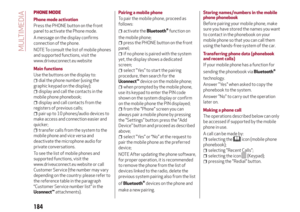 186
186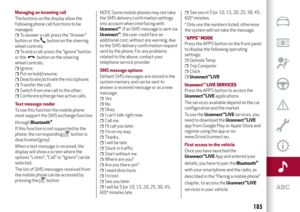 187
187 188
188 189
189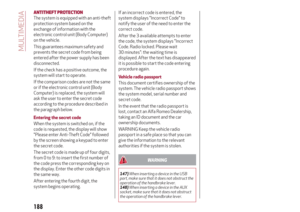 190
190 191
191 192
192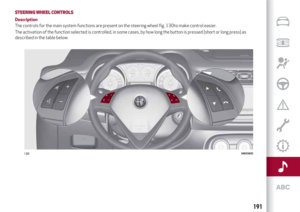 193
193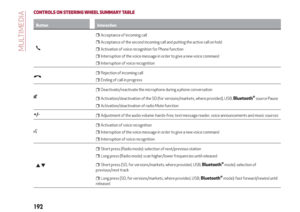 194
194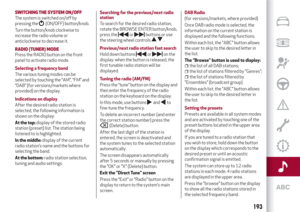 195
195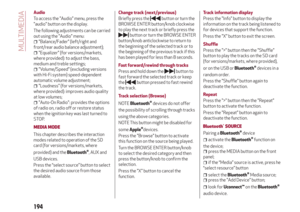 196
196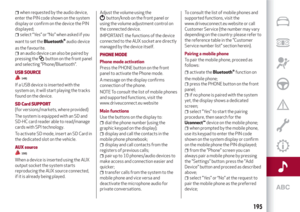 197
197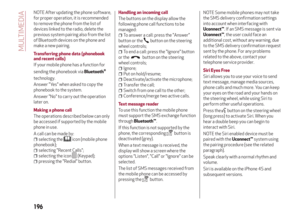 198
198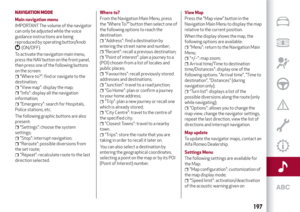 199
199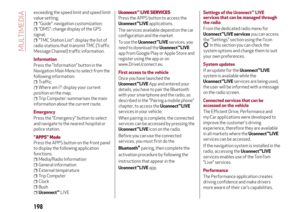 200
200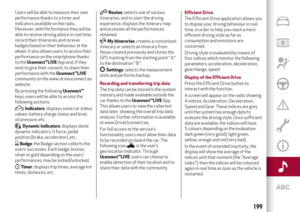 201
201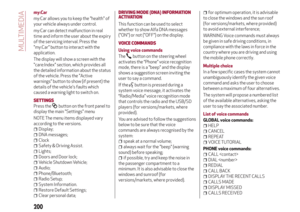 202
202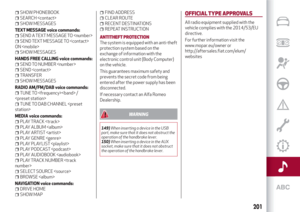 203
203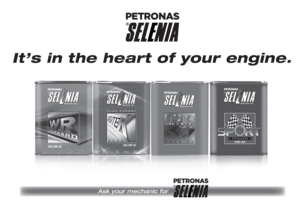 204
204 205
205 206
206 207
207 208
208 209
209 210
210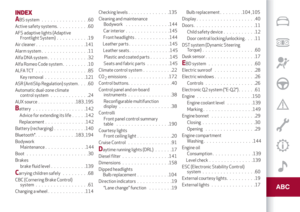 211
211 212
212 213
213 214
214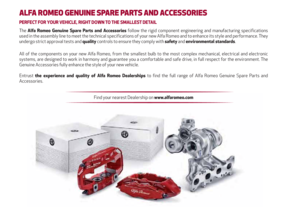 215
215






